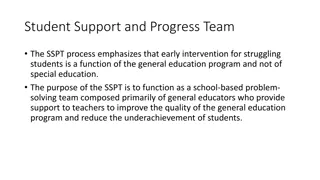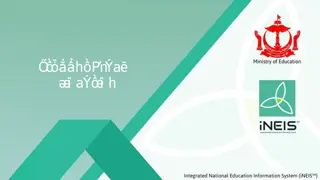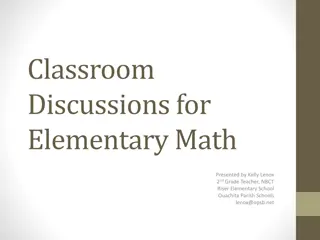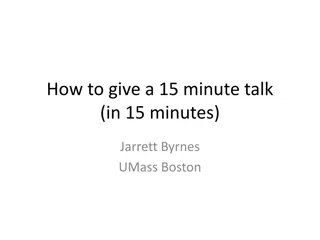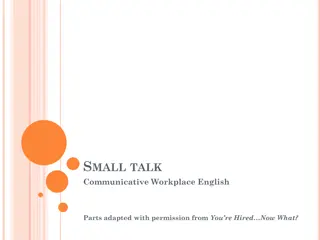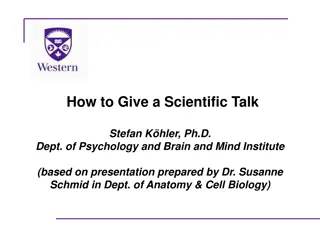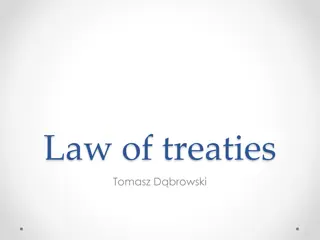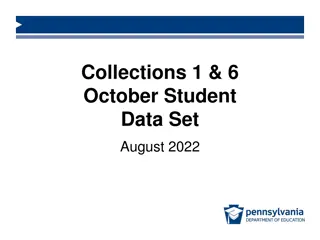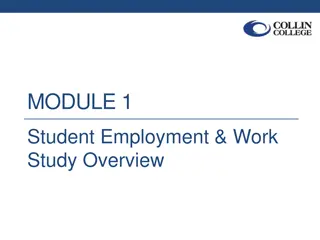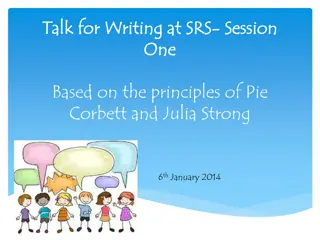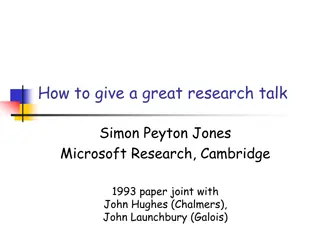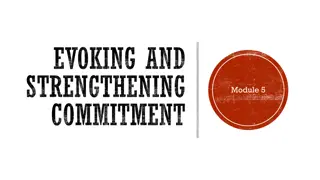
Learning NP-hard Problems Using Graph Neural Networks
Explore the potential of Graph Neural Networks (GNNs) in learning NP-hard problems through the metric dimension problem. Can GNNs effectively learn and solve NP-hard problems? Discover the background, challenges, and self-supervised learning approaches in this domain.
Download Presentation

Please find below an Image/Link to download the presentation.
The content on the website is provided AS IS for your information and personal use only. It may not be sold, licensed, or shared on other websites without obtaining consent from the author. If you encounter any issues during the download, it is possible that the publisher has removed the file from their server.
You are allowed to download the files provided on this website for personal or commercial use, subject to the condition that they are used lawfully. All files are the property of their respective owners.
The content on the website is provided AS IS for your information and personal use only. It may not be sold, licensed, or shared on other websites without obtaining consent from the author.
E N D
Presentation Transcript
Can Graph Neural Network learn an NP-hard problem? Michael Sun BU SIAM Chapter Seminar October 24, 2023
NP-hard problem: GPS on graphs Metric basis on graphs Illustration of GPS triangulation
Background: Metric Dimension Problem (MDP) On a graph G = (V, E), we call S V resolving if u, v V with u v, w V such that d(u, w) d(v, w). The smallest possible |S| is the metric dimension. Computing it is NP-hard shown via reduction from 3- SAT (Tillquist). Tillquist, Richard C. et al. Getting the Lay of the Land in Discrete Space: A Survey of Metric Dimension and its Applications. (2021).
Background: ML + NP-hard Learn over distribution of solutions Learn solution directly (RL) Idea: provide many (problem, solution) instances, can pick up patterns Idea: learn to build a solution, and use verifier as signal Selsam, Daniel, et al. "Learning a SAT solver from single-bit supervision." arXiv preprint arXiv:1802.03685 (2018). Khalil, Elias, et al. "Learning combinatorial optimization algorithms over graphs." Advances in neural information processing systems 30 (2017). Awesome survey: Bengio, Yoshua, Andrea Lodi, and Antoine Prouvost. "Machine learning for combinatorial optimization: a methodological tour d horizon." European Journal of Operational Research 290.2 (2021): 405-421.
Background: Graph Neural Networks (GNN) GNN => neural network on graphs Images/text are special cases of graphs Unlike images/text, there is no coordinate system to anchor nodes Stanford CS224W slides
Single-instance learning In real world we are often given only one of something (e.g. design one building, navigate over one graph) GNNs, like NNs, like being supervised by many instances and labels, but what if we have none? NP-GNN: Given G = (V, E), can GNN learn the minimal S, with G being the supervision? https://towardsdatascience.com/graph-convolutional- networks-deep-99d7fee5706f
Is self-supervision possible for learning metric dimension? Prediction approach (previous work on MDP) A solution S V should induce a self-expressive property, where: Input: Graph = (V, E) (1) [d(v, s), s S] is unique amongst v V 1. 2. 3. GNN predicts nodes S V Reward = how close S is (verifier) Update GNN parameters with reward An approximate solution S V should Autoregressive approach (previous work) Idea 1: Satisfy (1) but instead of [d(v, s), s S], replace with GNN representation H Build S incrementally Train GNN policy (pick action) and GNN critic (value function) Idea 2: Be unique by finding Z s.t. HZ = I, i.e. basis coordinates Requires supervision from verifier or labels! Does not require verifier! Works well on single instances! Works badly for single instances Michael Sun (2023). PP-GNN: Pretraining Position-aware Graph Neural Networks with the NP-hard metric dimension problem. Neurocomputing, 126848.
Results on learning the MDP RG(S) = 1/(|S|+|V|*|NRG(S)|) (NRG(S) = #pairs S cannot distinguish) vs GNN baseline: 151-172% reward vs Integer programming: >100x faster, up to 98% reward vs DistMask baselines: Ablation of idea 1 Michael Sun (2023). PP-GNN: Pretraining Position-aware Graph Neural Networks with the NP-hard metric dimension problem. Neurocomputing, 126848.
Ablation: Does idea 1 help? Matching strength Idea 1: Satisfy [d(v, s), s S] is unique amongst v V ; instead of D := [d(v, s), s S], learn to emulate with HK:= GNN(;) Align H to D by introducing penalty => no alignment, best penalty is zero New idea: Align #layers of GNN to diameter(G) => alignment at architecture level Michael Sun (2023). PP-GNN: Pretraining Position-aware Graph Neural Networks with the NP-hard metric dimension problem. Neurocomputing, 126848.
Background: Making GNNs more powerful with anchors Idea: Augment hvwith distances DS, e.g. S1= (v2, v1), S2= (v2, v3), S3= (v4) => h(v1) += [[1, 0], [1,1], [2]] Problem: Si s are sampled randomly per layer Bourgain s Theorem: need O(log2n) sets to embed into different points in Rkwith low distortion error You, Jiaxuan, Rex Ying, and Jure Leskovec. "Position-aware graph neural networks." International conference on machine learning. PMLR, 2019.
Solving the MDP leads to minimal, canonical anchors Previous framework 1. Heuristic-based selection of S (random => P-GNN, vertex cover => A-GNN, edge shell => AS-GNN, entropy => IEA-GNN ) 2. Augment hk(v) with DSduring training + inference per layer k Pretraining framework 1. Learn MDP on single instance => h 2. Initialize h0(v) with hK(v) 3. Augment hk(v) with DS*during training/inference per layer k Michael Sun (2023). PP-GNN: Pretraining Position-aware Graph Neural Networks with the NP-hard metric dimension problem. Neurocomputing, 126848.
Pretraining on MDP yields position-aware representations Node classification (A/B) Link Prediction (--/--) (0, 2) + + (3, 1) Compare typical GNN tasks on graphs which are positionally ambiguous : Grid (20x20 grid), Communities (Connected Caveman, 20 communities, 20 each) Add semantic features with Email (7 real-world email communication graphs, each with 6 communities) Michael Sun (2023). PP-GNN: Pretraining Position-aware Graph Neural Networks with the NP-hard metric dimension problem. Neurocomputing, 126848.
Future directions Given arbitrary graphs, we have a fast approximate solver of the metric basis. Improve the solver Apply the solver See Scholarpedia for some non-obvious applications, e.g.: Disease source localization Featurization of genetic sequences In what other problems does position matter? Let me know your ideas! Reach out! msun415@mit.edu Kojaku, Sadamori, et al. "The effectiveness of backward contact tracing in networks." Nature physics 17.5 (2021): 652-658.




